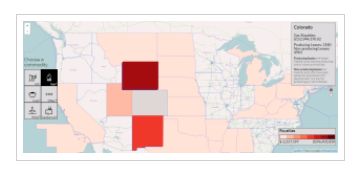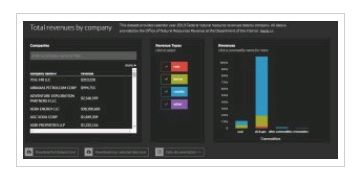Last Thursday, December 11, 2014, the Department of the Interior ("DOI") became the latest governmental agency to open the doors to some of its data via a new online portal located at target=_blankhttps://useiti.doi.gov/. 1

The new portal is part of the U.S. implementation of the Extractive Industries Transparency Initiative ("USEITI") and follows President Obama's May 9, 2013 executive order, making open and machine-readable data the new default for government information:2
"To promote continued job growth, Government efficiency, and the social good that can be gained from opening Government data to the public, the default state of new and modernized Government information resources shall be open and machine readable. Government information shall be managed as an asset throughout its life cycle to promote interoperability and openness, and, wherever possible and legally permissible, to ensure that data are released to the public in ways that can make the data easy to find, accessible, and usable. In making this the new default state, executive departments and agencies (agencies) shall ensure that they safeguard individual privacy, confidentiality, and national security."
DOI aims via its new portal to increase transparency and allow the public "access [to] detailed revenue data for the development and production of oil, gas, mineral, and other natural resources on Federal lands and offshore on the Outer Continental Shelf."3
These reported revenue data include parallel public disclosures by both the government and industry of the payments that companies make to the government for oil, gas, and mining resource development.4 The data currently available were provided by DOI's Office of Natural Resources Revenue ("ONRR"), which collects and disburses revenues from energy production on federal onshore and offshore lands and on Indian lands.5
At the new portal, the public may view federal resource royalties by location and by sector, and may also view how federal revenue is dispersed and shared. The portal also offers compiled data sets, maps, and graphs–not only by commodity, but also by company.

The "total revenues by company" data set provides calendar year 2013 natural resource revenues data by company. The data set includes revenues for U.S. federal lands and offshore areas, but not Indian lands, privately owned lands, or U.S. state lands.6 Selecting a company name allows a user to view rent, bonus, royalty, and other revenue totals by commodity.

The portal is currently in beta, but when fully developed aims to include information on more than 550 companies that meet the minimum payment threshold, currently set at $100,000 per year and determined by the USEITI Multi-Stakeholder Group, a body composed of representatives from government, industry, and civil society.7
Footnotes
6.https://useiti.doi.gov/documentation/#company
The content of this article is intended to provide a general guide to the subject matter. Specialist advice should be sought about your specific circumstances.
